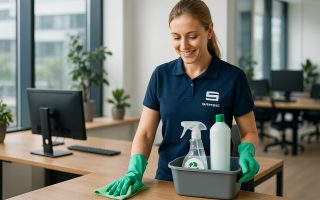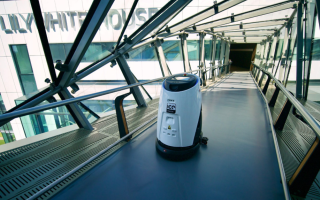Disinfection fogging is a method where cleaning solutions are applied to a surface in a fog. This requires the disinfectant to reach a specific concentration level for the clean to be effective, and whilst it isn’t the most common method for disinfecting, it is necessary to ensure that a given area is sufficiently disinfected.
What is fogging cleaning?
Fogging cleaning is an environmentally friendly way to clean and disinfect surfaces. It uses a low-pressure mist to clean and disinfect surfaces without using any chemicals. Fogging cleaning is often used in commercial and industrial settings where there is a lot of dirt and dust build-up.
Some industries that commonly use fogging cleaning include agriculture, automotive manufacturing, food preparation and processing, healthcare, education and aerospace manufacturing.
Where is disinfection fogging used?
Fogging cleaning is used in a few industries which benefit from the dry mist technique for disinfecting whole rooms at once. The food and healthcare industries in particular utilise this technique, but fogging cleaning can also be used in schools, office facilities and many more.
Why should you disinfect and fog your space?
There are many reasons why you should disinfect and fog your space.
- It can help to get rid of any bacteria, viruses or fungi that may be present
- It can help to reduce the risk of respiratory infections
- It can help to improve air quality
- It can help to improve your overall health
- It can help to reduce the amount of dust in the air
- It can help to reduce the number of allergens in the air
How does fogging cleaning work?
Fogging cleaning is a cleaning technique where a moist fog is created and then used to clean surfaces. The fog is created by spraying a water or solvent mixture onto the surface to be cleaned and then allowing it to sit for a few minutes.
This moist environment helps to break down oils, grease, and dirt on the surface.
How often should fogging cleaning be performed?
No one can agree on how often fogging cleaning should be performed. Some say it should be done every day, others say it only needs to be done once a week. The fact is, there is no definitive answer. It depends on the specific environment and the level of contamination.
There are various factors that can help health professionals and building managers decide, including the number of people in the space, the types of surfaces being cleaned, and the level of contamination.
In general, fogging cleaning should be conducted more frequently in high-traffic areas and less frequently in low-traffic areas.
What are the different types of fogging cleaning?
The three most common types of fogging cleaning are wet, dry, and ultra-dry.
- Wet fogging uses a water-based cleaning solution that is dispensed into the air as a fine mist. This type of disinfection process is best for cleaning surfaces that are not sensitive to moisture.
- Dry fogging uses a solvent-based cleaning solution that is dispensed into the air as a fine mist. This type of cleaning process is best for cleaning surfaces that are sensitive to moisture
- Ultra-dry fogging uses an oil-based cleaning solution that is dispensed into the air as a fine mist.
A fogging machine is ideal for widespread disinfection and sterilisation, especially in large areas such as warehouses and environments containing specialist or difficult to clean equipment, such as hospitals. Used with Toucan disinfectant, we can guarantee an instant kill rate of 99.9% of micro-organisms, bacteria and viruses without the need for an operative to be present.
Does fogging kill the coronavirus?
There is a lot of misinformation going around about coronavirus. Some people are saying that fogging will kill the virus, while others are saying that it won’t. So, what is the truth?
To date, there has been no scientific proof that fogging kills the coronavirus. In fact, there is some evidence that suggests that fogging may actually make the virus more potent. For example, a study conducted in Hong Kong found that when the city fogged to try and kill the virus, it actually resulted in an increase in both cases and deaths from SARS-CoV-2 (the virus that causes COVID-19).
Fogging may be effective at killing other types of viruses, but there is no evidence that it works against SARS-CoV-2.
The risks and side effects of fogging cleaning
In recent years, fogging cleaning has become an increasingly popular way to clean large areas quickly and without the need for manual labour. While fogging cleaning is an effective way to clean large areas, it also comes with a number of risks and side effects.
One of the biggest risks associated with fogging cleaning is that the chemicals used in the process can be harmful to both people and animals. In addition, fogging cleaning can also cause respiratory problems in people who are exposed to it.
Another risk associated with fogging cleaning is that it can create a fire hazard if used in an area where there is flammable material present.
We offer fogging used with the extraordinarily powerful chemical-free Toucan disinfectant. These fogging machines attack airborne pathogens and then, as the droplets begin to settle, they also attack bacteria on surfaces. Due to the nature of the aerosol effect, a large space can be covered quickly and easily without the need for an operative to be present.








